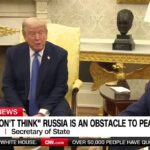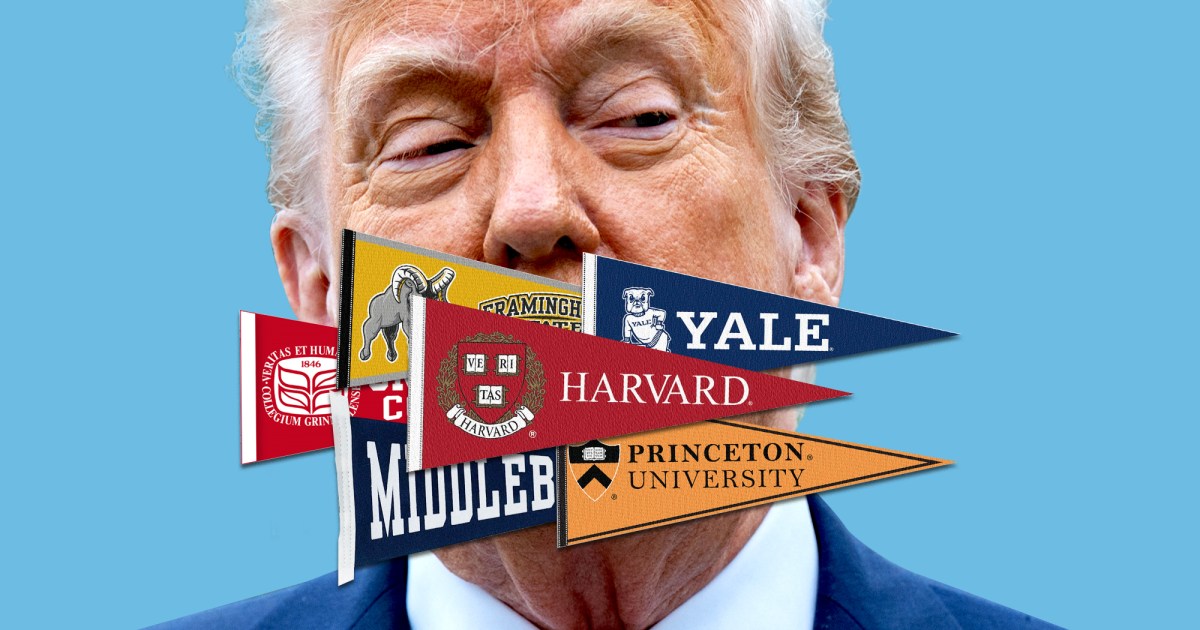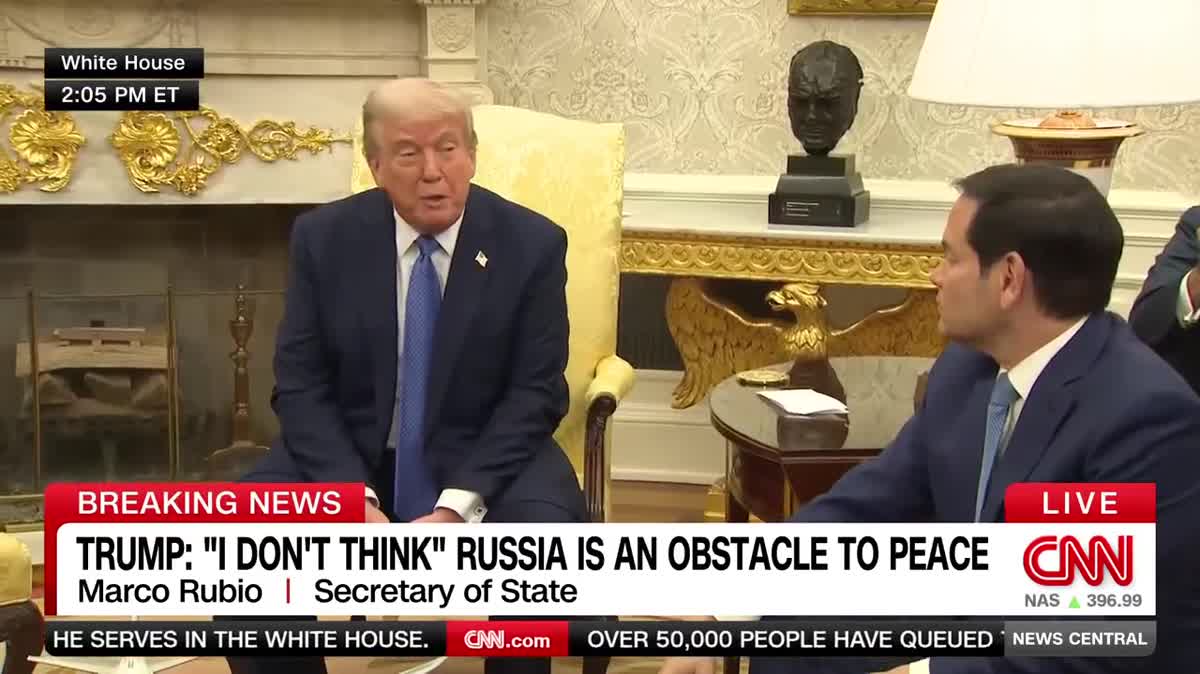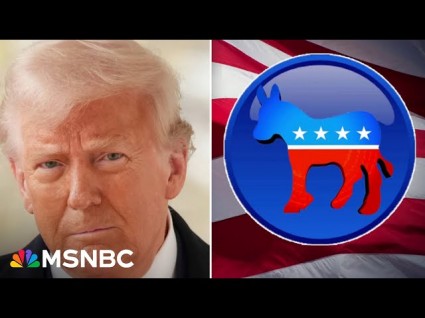When we think of “organizing” we tend to think of protesters—of scruffy and earnest demonstrators taking on giant corporations, of people with cardboard signs standing in the cold or the sun. But, really, organizing is any concentrated attempt of the (relatively) small and many to stand up to the mighty and the few, and the last few days have seen some of the most unlikely and potentially effective organizing in a long time.
In this case, the small and many were not people used to thinking of themselves that way. Instead, they were university presidents and boards of trustees—almost without exception, people of real distinction and power in their communities. I’ve served on university boards and broken bread with hundreds of college presidents (the price of lecturing to their students), and I know the breed: they tend towards the cautious and the conciliatory, but they have big reserves of local influence. They are, invariably, pillars of the community.
And so when Trump decided to try and crumple those pillars, they decided to stand up, circulating a letter that’s now been signed by more than four hundred college presidents. It was—perhaps only after the Hands Off demonstrations and Tesla takedowns—the most effective response yet to the creeping fascism in the Oval Office.
Everyone took their lead and their nerve from Harvard, where president Alan Garber and board chair Penny Pritzker pushed back hard a week ago against the administration’s attempt to basically take over the university in order to enforce something called “viewpoint diversity.” Harvard’s sharp response obviously stunned the White House, which had doubtless been lulled by Columbia University’s pathetic capitulation; as is often the case with bullies, Trump started looking for a way to back down, with his people eventually claiming that they had sent Harvard their diktat “by mistake.”
“We speak with one voice against the unprecedented government overreach and political interference now endangering American higher education.”
But by that time, the damage had been done—other educational leaders saw both the danger and the opportunity to confront it. For the first time, really, since James Conant in the Second World War, Harvard’s leaders have been serving the role they should as leaders of higher education. The extraordinary privilege of these places comes with the implicit promise that when the chips are down, they’ll actually stand up: that’s why Harvard’s Memorial Chapel is lined with the names of men who went off to die as officers in the world wars. In recent years, the Ivies have been too content to be finishing schools for Morgan Stanley; now perhaps they’re remembering their obligations.
The letter these hundreds of presidents have been signing is not strident or impolite; it acknowledges that there’s always room for improvement in any institution, but it definitely gets the point solidly across: “As leaders of America’s colleges, universities, and scholarly societies, we speak with one voice against the unprecedented government overreach and political interference now endangering American higher education.”
The list of signatories is wonderful to read—I’ve been on the majority of these campuses over the years, and so they summon up memories. Grinnell College, in the cornfields of Iowa, where my beloved aunt and uncle taught Latin and Greek to five decades of young scholars; St. Lawrence College, near the Canadian border, where I once gave a June graduation speech in a swirling snowstorm (shortest address ever!); Warren Wilson College, the North Carolina work school where I spent a day working alongside the livestock crew.
My own institution, Middlebury College, is between presidents, so we got both the interim president, Stephen Snyder, and his soon-to-be replacement Ian Baucom; our former president, Laurie Patton, who stepped down in January to head the American Academy of Arts and Sciences, not only signed the letter but did much to circulate it, so of course there’s hometown pride for me. But for lots of other people too: by many reports, alumni have been suddenly mailing in checks to their alma maters.
You could, I suppose, call all of these institutions the “elite,” though a tag that covers both Yale and Framingham State, Princeton and Hudson County Community College, doesn’t mean much. But this is a group of people self-selected to care about the idea of education and the future. They’ve been much abused in recent years, when one interest group after another has beaten up on them for being too hard or too soft on Gaza protesters, too accommodating to students climbing walls, too concerned with trigger warnings; the New York Times ran what seemed like a thousand op-eds attacking Harvard’s Claudine Gay last year for not being sufficiently anti-anti-Semitic. It’s mostly nonsense—college administrators are no better than anyone else at dealing with angry protesters; most of their efforts and expertise are about coming up with new degree programs to address the local nursing shortage, or raising enough money to fix the roof on the fieldhouse.
They take those tasks seriously, and they should. They were attacked for being who they are, by people who despise the very idea of education. Trump confidante Peter Thiel has literally paid kids money not to go to college; his protégé JD Vance has described his alma mater in New Haven as “genuinely totalitarian,” which seems both like nonsense to anyone who’s ever been there, and also a foreshadowing of the administration he now helps helm. So it’s right and refreshing for all these people to be able to say: colleges are good. They’re collections of smart people, passing on their knowledge to the next generation, which is both necessary and noble.
They were attacked for being who they are—by people who despise the very idea of education.
“Colleges and universities,” they write, in words that seem to me both restrained and correct, “are engines of opportunity and mobility, anchor institutions that contribute to economic and cultural vitality regionally and in our local communities. They foster creativity and innovation, provide human resources to meet the fast-changing demands of our dynamic workforce, and are themselves major employers. They nurture the scholarly pursuits that ensure America’s leadership in research, and many provide healthcare and other essential services. Most fundamentally, America’s colleges and universities prepare an educated citizenry to sustain our democracy.”
It’s that last bit, about sustaining democracy, that perhaps has not been their strong suit in recent years: if there’s a reasonable complaint against higher education, it’s that it’s perhaps tried too hard to make students feel comfortable, when a little challenge would be a more useful introduction to the hurly-burly of our current democracy. But challenge is what they’re providing now; this is the college president equivalent of gathering on the quad with candles for a vigil. Their document is designed to send a message to Washington (“back off—we’re unified enough to cause you trouble”) but it’s also a teaching document. It says, when someone questions your honor and your purpose, you better stand up.
It’s a lesson that won’t be lost on decent people.















